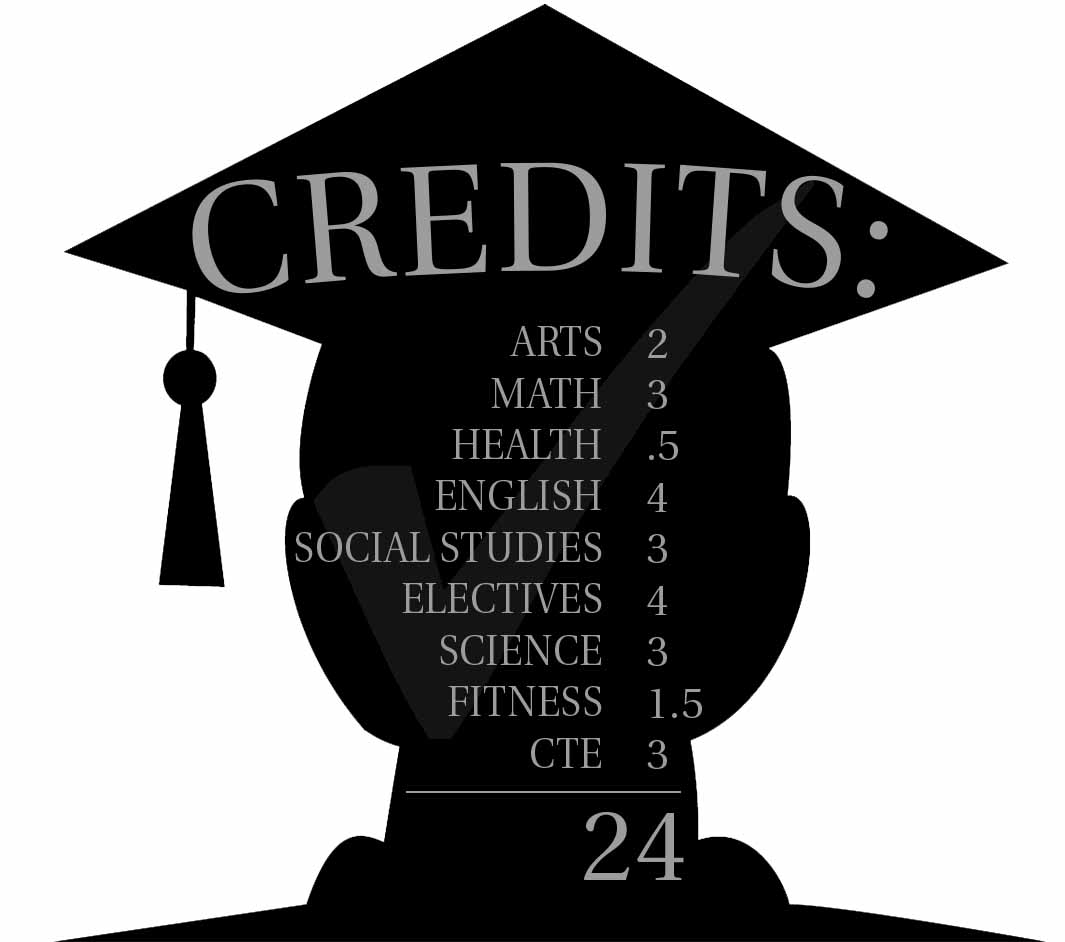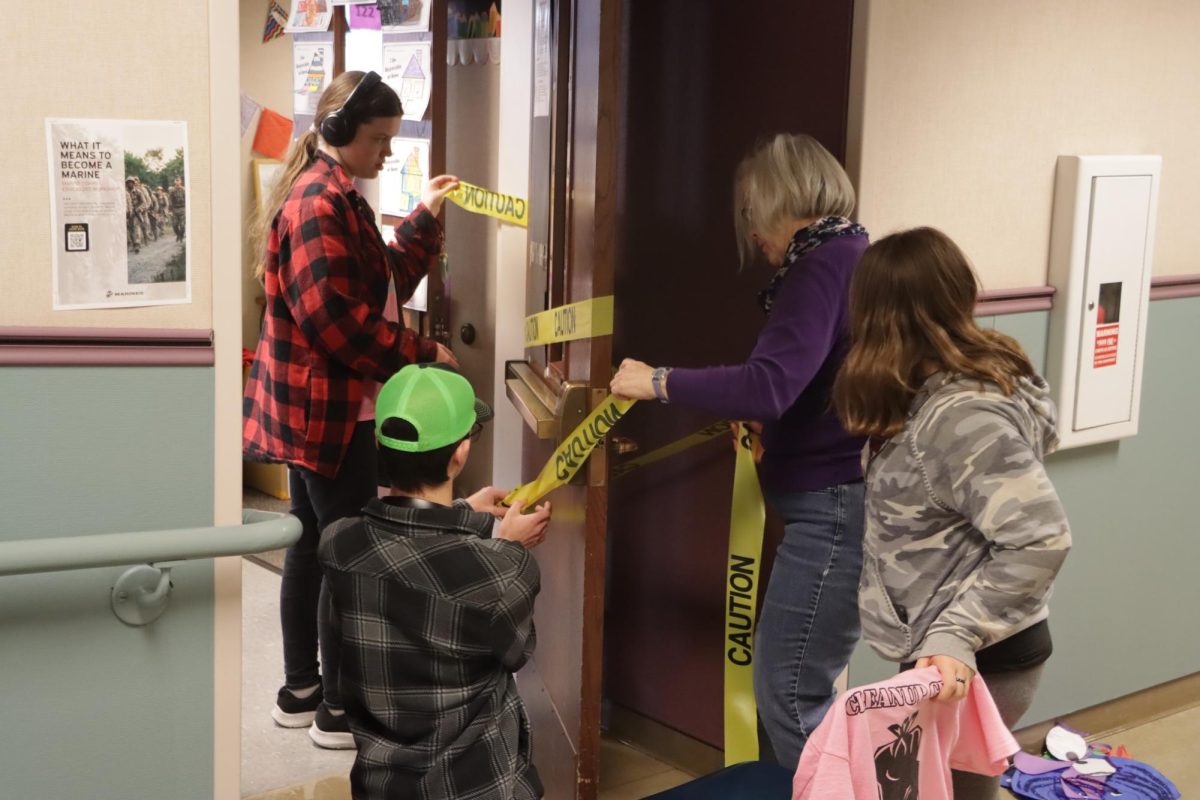Current sophomores are the first class to be affected by a new state-mandated 24-credit requirement system. The so-called “Core 24” took effect last year.
Counselor Michael Sanchez explains the reasoning behind introducing these requirements.
“What OSPI [the Office of the Superintendent of Public Instruction] and the Washington State Government wanted to do was provide a more likely pathway for students to go to college. They believe that if every student in the state of Washington is able to do this path and fill all these little gaps then they are prepared for two-or-four-year university,” Sanchez said.
The change, the largest in Washington State history, has been in development for an extended period of time.
“It has been a long process. I want to say five or six years,” Sanchez said.
The changes added requirements for a variety of classes.
“We now have an extra science requirement, they separated fitness and health [into two categories], they eliminated an occupational education credit and added a fine art credit. They also added two credits of world language and reduced electives to just four credits,” Sanchez said.
While the new requirements did cut electives, the Core 24 also introduced a whole fine art credit.
“I am really excited. I am glad that they have a full credit requirement for visual arts,” drawing and design teacher Joseph Loring said. “I do not think that it will affect them very much negatively. I know that there are ways that they can take my class.”
Despite the new requirement for fine art, Loring explained that credit requirements sometimes stand between students and fine arts.
“I have had students who were upset that they could not take my class because they had other classes they needed to take, other classes within their core curriculum such as reading, writing, math, things that are based on analytical thought,” Loring said.
Sanchez agreed, stating that requirements still affect the arts.
“The biggest challenge will be fitting in that fine art and world language component that they added,” Sanchez said.
Sophomore Jaime Goldberg, one of the first students to be affected by the Core 24 requirements, describes how the new system could affect his electives.
“I want to continue [electives] but I don’t know if I will be able to. It all depends on how my classes fit in throughout high school,” Goldberg said.
According to Sanchez, PPRs (personal pathway requirements) can be instrumental to fitting all the requirements in.
“PPRs… go with the career pathways that our CTE provides: accounting, business, graphic design, photography, health and human services, any one of those pathways. If you choose to take classes in these realms then you are propelling yourself forward for college,” Sanchez said.
The PPRs allow students to gain an advantage post-high school.
“If you decide to take Medical Terminology One and Two or Medical Careers Academy, you are on pace to go into some sort of medical career. If you are in that progression and you can not fit in an extra fine art then the state has said that we can use your personal pathway to eliminate that one extra credit for fine art and place it in your elective category,” Sanchez said.
One of the most major changes of the new system is that some students now have no leeway to fail a class.
“The Digitools course that students take in the ninth grade gives them a little bit of a boost. Essentially, if you took Digitools your ninth-grade year you can graduate with 24.5 credits if you passed every class. That would give you a .5-credit or semester buffer. However, it is not offered at every school and if you did not take that then you have no buffer,” Sanchez said.
Goldberg explained his reaction to the new requirements.
“At first I was worried that we needed more credits [than the other classes] but as I learned more about it I stopped worrying,” Goldberg said.
Loring speaks from personal experience as he points out the disadvantage of the Core 24.
“I know that in community college I had to take geometry three times and it took me that many times to find a teacher that could teach me the subject. It was not until I met a teacher that taught in the way that I learned that I received the information, not because the other teachers were bad, just because how I learned was not congruent with the way that they taught,” Loring said. “To think that the 1,800 kids that go to school here will not come up against that once in three years with the 36 classes that they take is ridiculous.”
If a student does fail a class or lack a credit, there are options to make it up.
“You have to do something to recover that credit and there are only a few options that we have currently to recover credit. One is our credit retrieval option after school. We have a computer program called Odyssey Ware. Another option is an online independent study,” Sanchez said.
Sanchez stated that students can also retrieve credit in other ways.
“There is a world language test that we started offering in our district recently where if you take this test and pass a certain level you get credit for all the levels before it,” Sanchez said.







